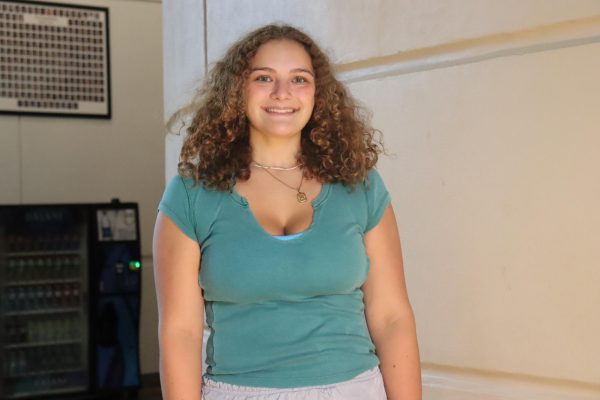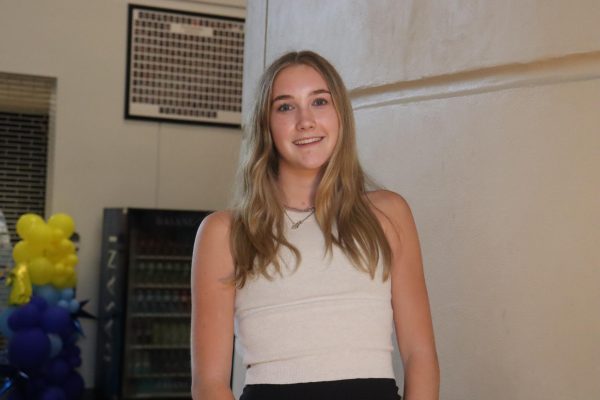Homeschool (by Sophia Doyle):
Homeschool structures and values vary widely, but the premise is an education at home with family. Homeschooling focuses on the personal interest of the child, encourages exploration and curiosity, and often utilizes a more hands-on style of learning. Homeschooling has been gaining popularity, with the percentage of homeschooled students in America increasing 10% annually according to the United States Department of Education. Large classroom sizes at public schools limit teachers’ ability to personalize lessons and focus on an individual student’s needs. A child who is home schooled receives lessons designed specifically based on the students strengths, weaknesses, and learning style. Homeschool curriculums are not standardized so there is no need for unit summatives and state tests. People often worry this leaves children underprepared, but the National Home Education Research Institute, or the NHERI, found that homeschooled students actually outperform public school students by 20-30% on standardized tests. Instead of prioritizing learning facts for a test, homeschooling aims to encourage curiosity and promote lifelong learning.
“There is no system that covers everything so education should be lifelong.” said Adrienne Brown, a homeschooling parent. “All of my kids were homeschooled until high school. All have done very well academically in traditional school. They were consistently in AP classes and graduated with honors.”
Studies from the NHERI, ParentingMode.com, the Noah Webster Educational Foundation, and the Wall Street Journal have found that 70% of homeschoolers graduate from a four-year college, which is 15% higher than the number of public school students who enroll in college. Comparatively, homeschoolers perform higher on college entrance exams and have higher GPAs in the first and fourth years of college. Post-college homeschooled students are reportedly more involved members in their communities, as well as more politically and culturally open minded. As well as giving students a quality education, the added freedom and flexibility in the homeschooling system allows for more time.
“We could drop everything in an hour’s notice and meet our friends for a day-long adventure,” Sarah Ligon said. “They had all the field trips, class parties, and Valentine’s exchanges they would have had in traditional school. They were able to learn life skills like growing plants, cooking, and sewing. It was lovely that they were able to learn about anything they were interested in, whether chemistry, mythology, or pottery.”
Homeschooling has been shown to result in higher academic performance and success rates in and after college, and more maturity. While homeschooling is not for everyone, it is definitely a viable option and provides a lot of unique options for a child’s education.
Public School (by Alexa Farese):
Public school is the best option for students that desire an education with opportunities in all areas of interest. It has more extracurricular, academic, and social benefits than any other schooling.
The extracurriculars in public schools are a major draw for most students. There is a wide variety of activities to choose from. Whether a student has a passion for performing arts, athletics, or something more niche, there is something for
everyone. Sophomore Cooper Eddleman went to private school for nine years. Eddleman believes the diversity of activities available allows students to branch out and explore their interests.
“Switching to public school was a good choice for extracurriculars because there are so many different options you can choose to be a part of that aren’t available in smaller schools,” Eddleman said.
Public school offers a great deal of academic diversity and a larger variety of classes. There are classes for all levels of academic achievement as well as special education and other classes. Guy Frugè, a sophomore at OHS, was homeschooled for four years. Fruge claims the opportunities he has received from public school are exponentially better than the ones he would have had while homeschooled.
“Making the change to public school made me realize that the opportunities we are given in terms of schooling at Oxford are way more than I could have imagined while in homeschool,” Frugè said.
While the large quantity of students in public schools can be intimidating, it means that there is a community for each student no matter their circumstance. Public schools also offer many resources that help with the individual development of each student, such as counselors.
“Within public schools, counselors have federal mandates to protect students academically, socially, and emotionally and provide assistance in those aspects and many more,” Elizabeth Cassidy, OHS counselor, said.
Parents looking for the best opportunities for their kids should send them to public schools. It is the best option for extracurricular, academic, and social benefits.
Private School (by Liza O’Reilly):
Public, private, and homeschool education create different options for people to consider when choosing which education route they would like to take for their family. A few things to consider include smaller class sizes, learning environments, dress codes, discipline, and athletics. Each system has a variety of aspects of what they offer. Private school is the top option because of the rigorous learning curriculum, strong parental involvement, and challenges on and off the field.
One advantage to a private school education is it’s ability to focus more on the whole child and the foundations of their educational development, rather than placing so much emphasis on state and standardized test scores. According to a study performed by Our Kids the Trusted Source, the majority of independent schools are recognized for having satisfactory achievement test scores, most of this relates back to the fact of having smaller class sizes. Smaller class sizes can also help with more one on one time because of the smaller student to teacher ratio. Having fewer students in a classroom creates a larger opportunity to form strong long lasting relationships with your peers. A negative aspect of private schools is that they are not able to offer as many classes as a public school. This is because most private schools put more emphasis on an advanced college prep curriculum therefore keeping their offerings more traditional.
Private schools often set themselves apart from other learning environments by adhering to a strict uniform policy. By requiring students to wear uniforms in school it can ease the stress load on the students because they don’t have to worry about what everyone else is wearing, everyone is wearing the same outfit. Uniforms can also help with the overall cost of having to buy multiple types of clothing like you do at a public school.
Tuition based education is able to provide a different form of discipline for their school community stemming from stronger parental involvement, and a more secure and family style overall atmosphere. A lot of private schools have it as a priority to have parental involvement throughout the school. This can also help build stronger parent-child bonds according to Our Kids the Trusted Source. Most independent schools as well provide a stronger environment for counseling and mental health, which helps foster a different style of behavior concerns focused on by the administration. On the other hand, athletics are usually taken more seriously at a public school. Most athletes at private schools run into the issue of having a hard time getting noticed or recruited by more well known universities. Although, there are negative parts of private school most people would agree that private school is more preferred.
Overall, private schools have rigorous curriculum, strong parental involvement, and challenges on and off the field. These factors support the idea that private schools are preferred over public or homeschools.









